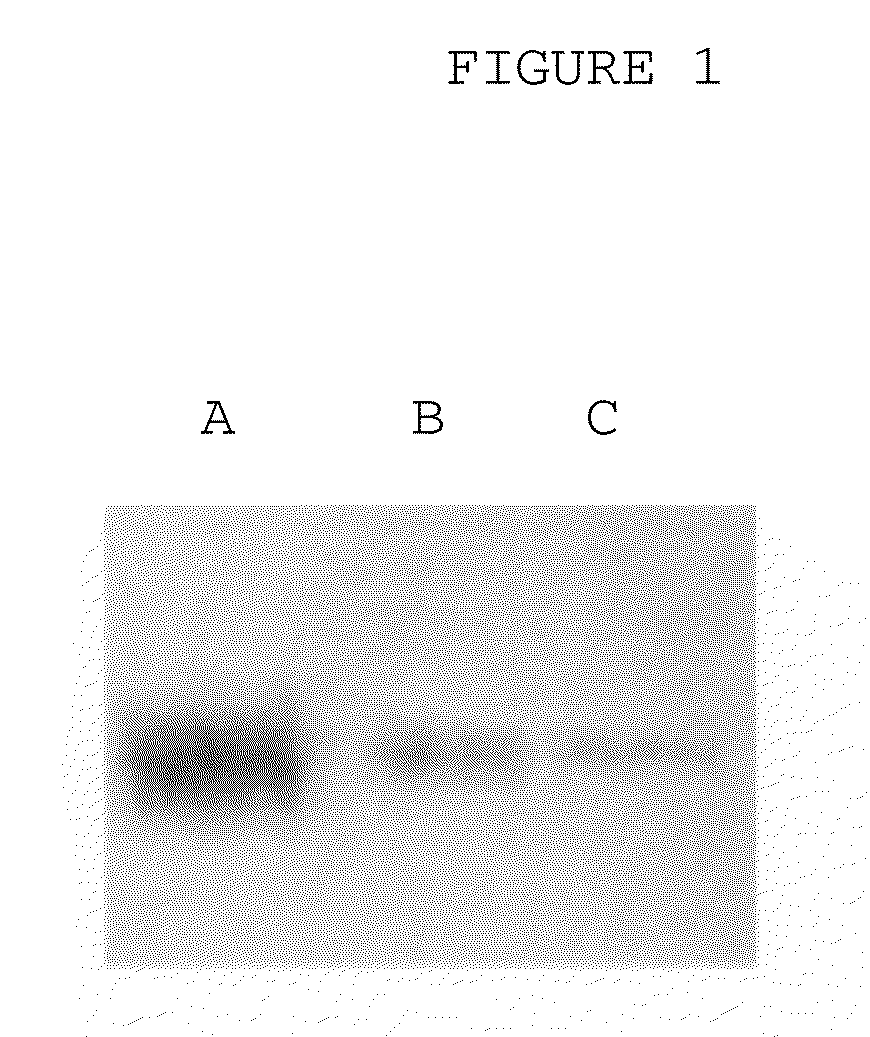Method for treating systemic DNA mutation disease
a technology treatment method, which is applied in the field of medical treatment of can solve the problems of development of somatic mosaicism, inability to take any technical solution as prototype, and no therapeutic method developed for dna targeting extracellular blood in systemic dna mutation diseases
- Summary
- Abstract
- Description
- Claims
- Application Information
AI Technical Summary
Benefits of technology
Problems solved by technology
Method used
Image
Examples
example 1
DNASE Treatment Suppresses the Development of Somatic Mosaicism
[0032]Frequency of HPRT gene's mutations in blood T-lymphocytes was studied as the model of development of somatic mosaicism in vivo. The human HPRT gene, mapped to chromosome Xq26, codes for a constitutively expressed, but non-essential, enzyme involved in purine metabolism. Mutant peripheral blood T-lymphocytes which do not express a functional HPRT gene product can be enumerated and clonally expanded by selective growth in the normally toxic purine analog 6-thioguanine in the presence of specific mitogens and growth factors. In normal, unexposed individuals the frequency of 6-thioguanine resistant T-lymphocytes is typically 10−6 to 10−5 (R. J. Albertini, J. A. Nicklas, J. P. O'Neill, S. H. Robison, In vivo somatic mutations in humans: measurement and analy-sis, Annu. Rev. Genet. 24 {hacek over (Z)}1990. 305-326.) Molecular analyses of the mutant, HPRT deficient, clones have demonstrated that 85% of the gene inactivati...
example 2
Extracellular Blood DNA Promotes the Development of Somatic Mosaicism
[0038]The extracellular blood plasma DNA was purified from blood of patient ENV as specified in methods section. Mononuclear cells were isolated from the whole blood samples of patients KNP, PGP, BAI and FVV as specified in Example 1. The mitogenic stimulation and selective cloning were performed as specified in Example 1 with modification as follows: during mitogenic activation stage lymphocyte cultures of patients KNP, PGP, BAI and FVV were supplemented with 50 mkg / ml of extracellular blood plasma DNA purified from patient ENV. After 5 days of culture, the colonies on mutant selection plates were scored for growth using an inverted microscope. The results of selective T-lymphocyte cloning are presented in the table below:
[0039]
Total number ofHPRT− wells (growthPatientwellspositive)K N P38418P G P38415B A I38421F V V38431
[0040]Thus, extracellular blood DNA promotes the development of somatic mosaicism.
example 3
Sequencing of Extracellular Blood DNA from the Patient Suffering from Type 2 Diabetes and Systemic Atherosclerosis. Treatment of Atherosclerosis
[0041]A 54-years-old man has been admitted to the Cardiothoracic surgery department of Kostushko municipal hospital (St. Petersburg) in severe condition complaining on intensive pain in abdomen, diarrhea, intensive pain in legs that appear during walking, loss of weight. Diabetes mellitus type 2 was diagnosed 12 years ago and glybencamide was prescribed. Pain in epigastrium after food intake appeared 15 months ago. Antacids were prescribed but pain continued to increase and steatorrhea appeared in the last 3 months. Because of intensive pain syndrome anorexia has developed in a couple of days prior admittance. Considerable exhaustion (body weight was 44 kg; body weight loss was 28 kg for the last 5 months) and absence of arterial pulsation on legs were found out during examination. No organic changes were observed during gastroduodenoscopy a...
PUM
| Property | Measurement | Unit |
|---|---|---|
| pH | aaaaa | aaaaa |
| pH | aaaaa | aaaaa |
| volume | aaaaa | aaaaa |
Abstract
Description
Claims
Application Information
 Login to View More
Login to View More - R&D
- Intellectual Property
- Life Sciences
- Materials
- Tech Scout
- Unparalleled Data Quality
- Higher Quality Content
- 60% Fewer Hallucinations
Browse by: Latest US Patents, China's latest patents, Technical Efficacy Thesaurus, Application Domain, Technology Topic, Popular Technical Reports.
© 2025 PatSnap. All rights reserved.Legal|Privacy policy|Modern Slavery Act Transparency Statement|Sitemap|About US| Contact US: help@patsnap.com


